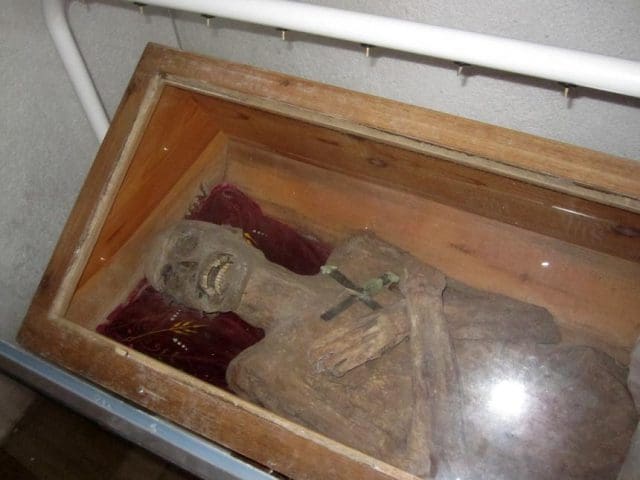Scientists have solved the mystery around the body of a lederhosen-wearing Austrian priest who died in 1746 that caused a sensation when it was found to have not decayed.
Miracle when the body was found
Many claimed it was a miracle when the body was found to have been naturally mummified rather than decaying, despite being buried 272 years ago. The corpse had been laid to rest in a crypt wearing the lederhosen which is the traditional clothing in the Alpine regions where he lived in the district of St. Thomas am Blasenstein in Upper Austria.
Because of the condition of the body with some areas in particular showing almost no signs of decay, he was given the nickname Leather Franzy by locals as scientists moving to study the phenomena. And now the experts have not only confirmed the identity of the body, which was previously only suspected to be known, but also say that he was a heavy smoker.
The mummy s lung showed tuberculosis
Head pathologist Andreas Nerlich and forensic scientists Peter Hofer and Oliver Peschel of the University in Munich in the south-eastern German state of Bavaria carried out a ten-month examination of the Leather Franzy mummy. The scientists say they have now confirmed the mummy was parish vicar Franz Xaver Sydler von Rosenegg who lived from 1709 to 1746. According to their findings, he died of tuberculosis and not of epilepsy as previously thought. The team of scientists said: “The mummy s right lung showed advanced tuberculosis and internal haemorrhage as the cause of death.
“The priest s corpse was stuffed with scraps of cloth, wood chips and branches. Then the deceased was buried in the crypt, where climatically suitable conditions ensured that the corpse mummified and didn t decompose.” A mysterious ball in his lower abdomen seen before on x-rays and suspected to have been a poisoning attempt turned out to be a glass bead used for handiwork and rosaries.
Radio-carbon dating
It is assumed the glass bead could have made its way into the body during the stuffing of the corpse. The skin and bones findings indicated the priest was well nourished and did not have to work particularly hard but abrasions on his incisors indicated that he smoked a pipe over a long period of time.
Radio-carbon dating of a tissue sample puts the time of death between 1734 and 1780 and his shoes were estimated to be from between 1670 and 1750. Leather Franzy meanwhile is now back in his crypt for public viewing.




